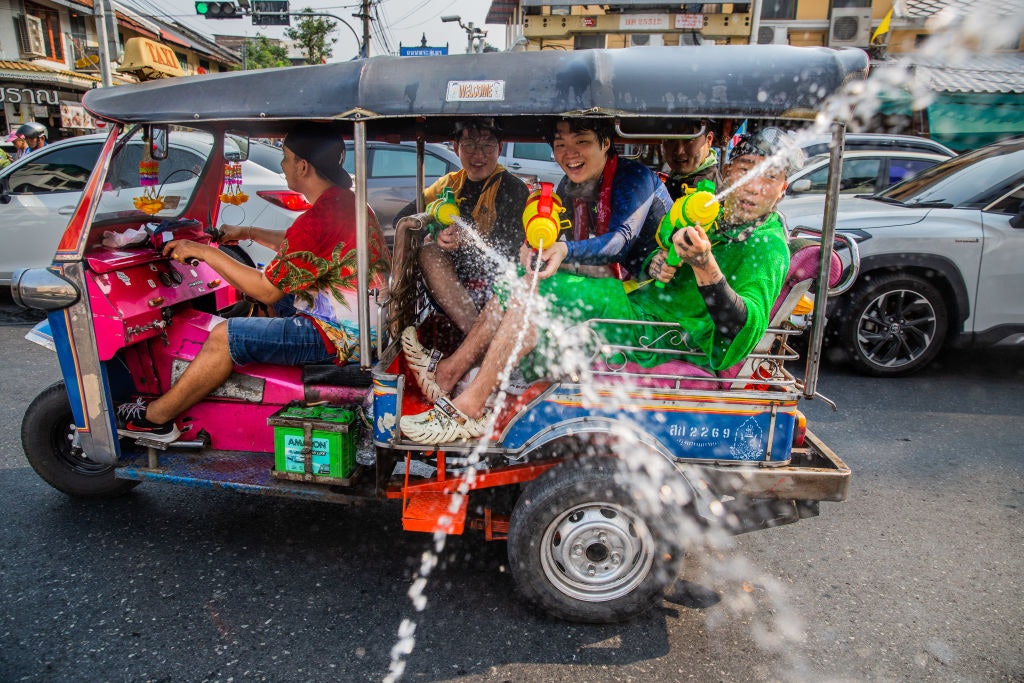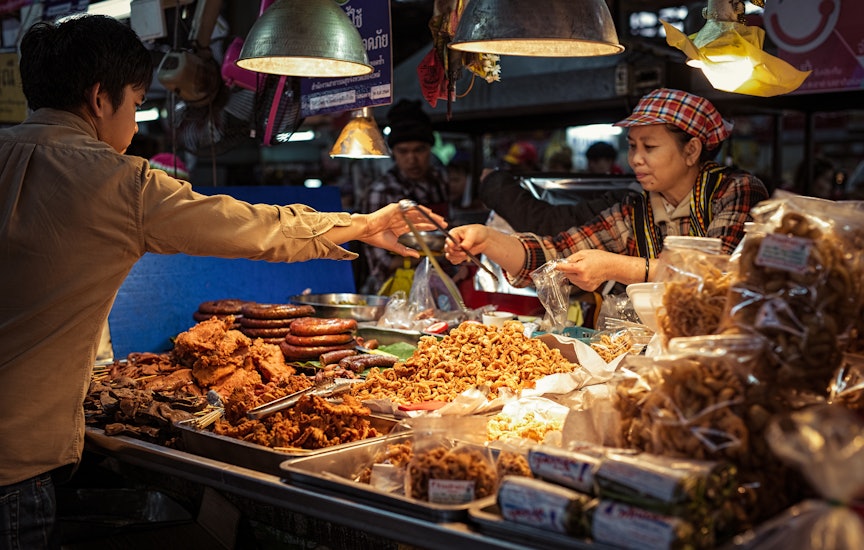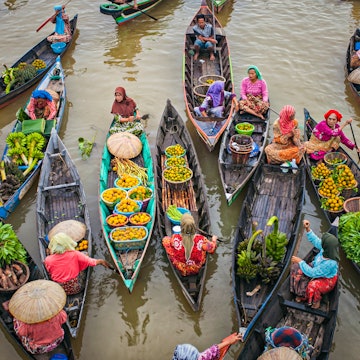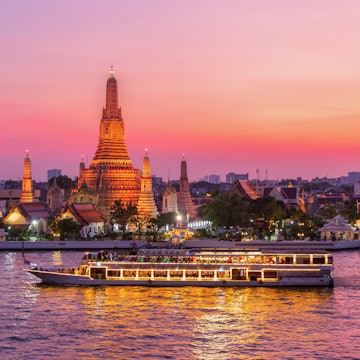

Exploring Krabi in Thailand. Anna Yordanova/Shutterstock
Silky-soft beaches, jungle-draped mountains, incredible food and a well-connected position at the heart of Southeast Asia have made Thailand a tourism hub for decades.
All the same, travelers who dream of perpetually sunny skies and balmy weather might be dismayed at the pelting rain that arrives like clockwork every July or the sky-high price of their hotel from December to January.
The kingdom is full of diversions – myriad night markets, thundering waterfalls, even cherry blossoms and the occasional dusting of frost – but to experience them for yourself, you need to be in the right place at the right time. Here’s how.

December to February is best for beaches
Weather in Thailand from December to February: The prevailing joke about Thai weather is that the country has three seasons: hot; wet and hot; and really, really hot. That may be, but when the “cool” season rolls around in December, you will find Thais bundled up in sweaters and even puffer jackets to combat temperatures that fall as low as 23°C (73°F).
While this may be cold for Thais, it’s perfect for international travelers hitting the beach, especially those escaping the northern winter, and resorts like Phuket, Samui and Krabi are predictably packed with sun-seekers at this time of year.
Daytime highs of 31°C (88°F) make outdoor activities warm but bearable, while nights are a hive of activity, with street food vendors lining the sidewalks and markets clad in fairy lights tempting even the most unwilling of shoppers.
The cool season is not for beachcombers alone. This time of year sees frost up north in the mountains as temperatures drop to 13°C (55°F). The northeast region even ushers in its own cherry blossom season as Phu Lom Lo erupts in a burst of pink Himalayan cherry blooms. Early morning hikers are rewarded with sunrise views over a sea of fog at the northern border with Laos, and wildflowers dapple the slopes of Doi Suthep and Phu Tabberk.
Not surprisingly then, this time is considered Thailand’s high season, when hotel and transportation prices are at their peak. However, the payoff is the kingdom at arguably its most beautiful and welcoming, temperature-wise.

March and April are best for tropical fruit and Songkran
Weather in Thailand in March and April: The weather, even for Thais, becomes alarmingly toasty during Thailand’s “summer” when temperatures average 30°C (87°F). School is out, meaning the capital is less crowded than usual, and the beaches are typically jammed with Bangkokians seeking reprieve from the heat. Meanwhile, temperatures in the usually temperate north soar to 36°C (97°F).
While it may seem a miserable time to visit, foodies will have a field day because all of Thailand’s most beloved fruits – mangoes, mangosteens, rambutans and Marian plums – are in season.
In mid-April, Thailand celebrates its new year, Songkran, and the streets burst into joyful water fights. You’ll find the entire country in celebration: families seeking blessings from their elders, Thais dancing in the streets, and travelers receiving benedictions in the form of perfumed water on the hands, daubings of brightly colored powder on the cheeks or (most likely) a blast of water in the face. Fans of water fights (and getting drenched) will find their like-minded brethren anywhere in the kingdom.
Meanwhile, fans of an empty Bangkok can take advantage of… an empty Bangkok. That means breezy commutes from one end of the city to the other, less competition at popular restaurants and fewer crowds to contend with at shopping malls and theaters. The change in the city is so pronounced that quite a few Bangkokians prize this time of year, opting to make sure that when Songkhran rolls around, they celebrate in the capital.

May to October is best for accommodation bargains
Weather in Thailand from May to October: Thailand’s rainy season is long, but it doesn’t necessarily mean non-stop torrential downpours. Monsoon rains, especially before July, are typically violent but short, usually arriving in the early evening and lasting for 20 to 30 minutes. (Luckily, Thailand’s location means it avoids the strong typhoons experienced by Vietnam and the Philippines.) The problem is Bangkok traffic snarls for hours as a result, but travelers in less congested destinations are not necessarily affected, and hotel and transportation prices linger at months-long lows.
From May to July, beach resorts on the Andaman Sea side of Thailand – especially on weekdays – are basically deserted, claiming only a fraction of the prices they would normally charge during high season. This means that even at five-star resorts, choice rooms can be rented for far less than their usual rate. And while there will likely be daily rains, they’re usually brief.
Low-season rates extend to non-beach-but-still-popular destinations like Chiang Mai and Khao Sok, where a treasure trove of accommodation options, from floating bungalows to mountaintop cabins, awaits savvy bargain hunters willing to put up with a sudden shower or two. In contrast, July and August are peak season for islands in the Gulf of Thailand like Samui, where the weather is less affected by monsoon rains.
From September to October, the northeast is brimming with waterfalls, providing impromptu bathing areas for visitors with the foresight to bring bathing suits or even just towels. A word of warning: this is also when flooding may occur in the north or northeast, with water reaching all the way to Bangkok in some years. Only riverside areas are at risk, so make sure to check before you go.

November is best for trekking and experiencing Loi Krathong
Weather in Thailand in November: November marks the beginning of the dry season. Expect an average daytime high of 28.9°C (84°F).
This is considered the shoulder to high season, but bargains can still be found among the bigger local hotel chains. The weather is lovely in November, especially in the north. This is the perfect time to go trekking with overflowing waterfalls and sunny days.
On the night of November’s full moon, the country celebrates its Loi Krathong festival, marking the end of the rainy season. This is also when people float away their sins by placing candles on makeshift river rafts or lanterns in hopes of welcoming the coming year with a clean slate.
















